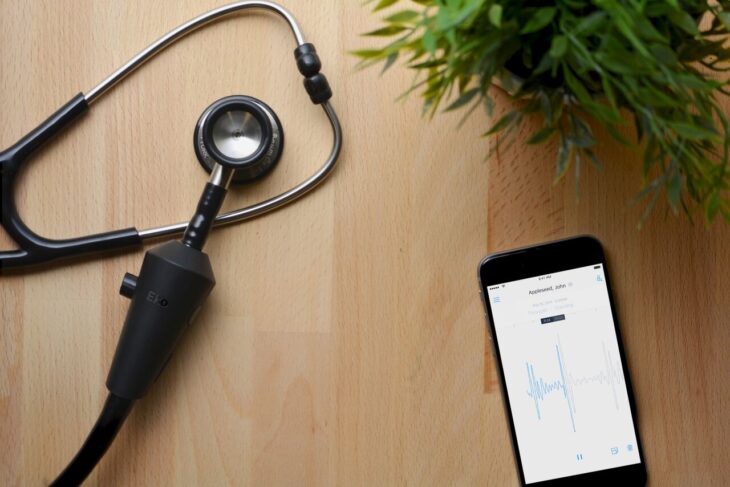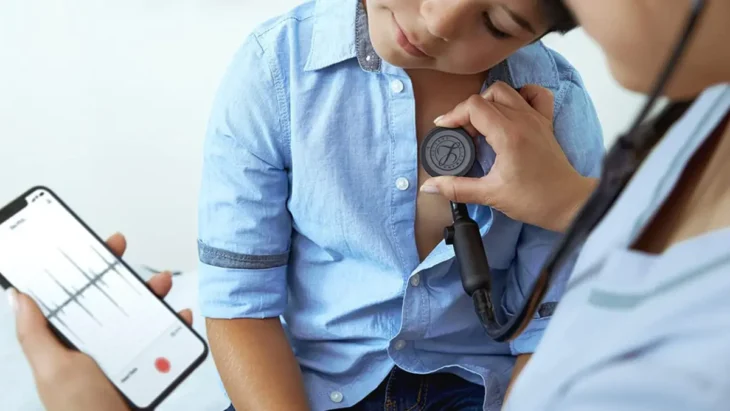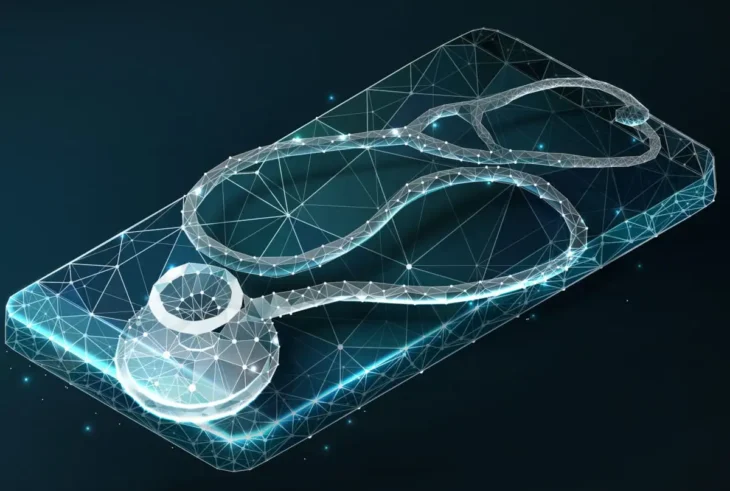We are all witnesses of how Medicine and medical technology, in general, have advanced over the past century. Tons of new diagnostic tools have been developed to simplify the process of diagnosing and treating patients, but there are a couple of tools that have resisted all the changes and development. One such tool is the stethoscope. Its usage shows that doctors still stick to the device that came into use at the same time leeches were used for therapy purposes.
Few devices represent the symbol of Western medicine as a stethoscope. Medical schools often give them to freshmen with a white coat, for a happy start to their studies. It is quite a cost-effective and diverse tool – it allows doctors to detect signs of health problems early and costs only a few hundred dollars.
A little bit about the history of stethoscopes…

Source: washingtonpost.com
You probably didn’t know that it is a two centuries old tool.
In 1816, there were no other ways to get an overview of what is happening inside the body. Practitioners didn’t even dream about the amazing scanners we have today. Then why do we still use nineteenth-century rubber tubing?
The tool was invented two hundred years ago by the French doctor when he needed a new solution to hearing the heartbeat of a plump patient. How did he come to such an idea? Well, he remembered the scene of children sending messages to each other while playing, by listening on one side of the board and scratching on the other (19th-century version of deaf phones). He came up with the idea for a device whose one end would rest on the patient’s body and the other on the doctor’s ear to amplify the sounds coming from the chest.
But diagnosing by listening to the sound the body produces – a method known as auscultation – dates back to ancient times. Sometimes doctors would simply put their ear to the patient’s back, chest, or abdomen and listen in search of gargling, hissing, and heartbeat. The stethoscope only improved this process.
All of these new mechanisms have improved doctors’ ability to make diagnoses, but they have been too expensive and complicated to use in the first step. When a patient enters the office and complains that he is breathing hard, the doctor does not send him to the scanner before the routine examination.
By now, many are probably thinking about why it was never changed by different tools which also give insights about the same thing, such as an ultrasound, for example. It’s much more convenient, easier to use, and gives also a visual of the patients inside of the organ, instead of just the sound. The answer could be that these old methods are still found more trustworthy by many. It is why specialists like for instance a cardiologist will first perform a detailed check by listening, and if something suspicious is found proceed with the usage of modern tools. According to what can be found on Ekuore there are tons of other new technologies that could also change their use. This is why there is a digital version of the stethoscope, besides the old, analog one. In the rest of the article, we’ll try to answer whether digital is better than analog…
Analog vs. digital

Source: lifesavvy.com
Even though many feel as these old tools are simply outdated, there are situations when having an analog stethoscope might just save your day. First, to underline, that purpose-wise, both digital and analog are good and will do the trick. But in situations of power shortages, battery draining, or similar, fieldwork in remote areas, having an analog one will ensure people are diagnosed correctly.
One surely can get reliable insight into the sound of the organs.
However, digital ones come with a couple of more features and commodities… Let’s have a look at what they are…
Quality of sound. There have been some experiences from the practice, as well as research that has shown how findings that came from the digital devices have fewer hearing murmurs. New technologies such as ambient noise reduction technology or innovation in design help users have better sound quality, as presented in an article on Healthcanal. Also, changes in the frequency waves are easier. So, in regards to the sound, they are more efficient and clearer (the sound is louder).
Simplicity in usage. Whoever trained to be a medical practitioner knows how ear tips can be painful, or produce a headache if used for long. Not to mention the potential ear infection one can get, if the tool is shared by a team of doctors. Digital doesn’t come with these challenges. Headphones you use can be purchased according to your needs, and are definitely much more comfortable. Moreover, you can choose to use earphones.
Noise diminishing function. Since doctors and medical practitioners are generally expected to work in challenging circumstances that may include a lot of noise, having a feature that minimizes these noises helps a doctor listen more effectively which directly influences his ability to diagnose well. With digital equipment, you are only a click away from silencing the entire ER room.

Source: medicalgiftguide.com
Multiple functions for different purposes. Not every specialist will need a stethoscope for the same purpose, therefore a pediatrician will use it differently than a pomologist, or cardiologist. Therefore, digital ones are designed to have audio filters for each purpose. One can choose between the heart, lungs, or some other organ. Superior sound quality is something that can be chosen when needed.
Recording. The best thing about the digital is the ability to record and save what you are hearing, just in case you need the recording. Afterward, you can listen to it as many times as you need or want, consult others if you’re not entirely sure about what’s causing it, or print it and document it for comparison later and the medical history of a patient.
Finally, it can be concluded that the digital stethoscope comes far more useful than the analog one, for all the reasons above. However, a serious practitioner will always have an analog version of it, just in case.
